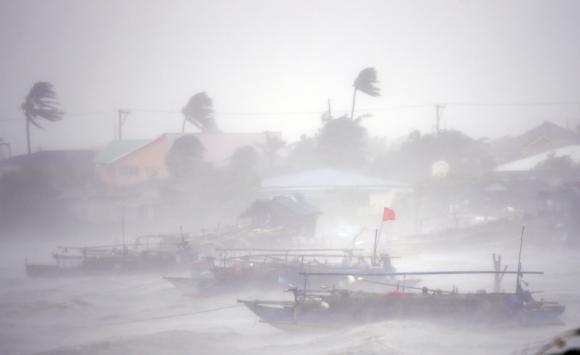
CREDIT: REUTERS/ERIK DE CASTRO
(Reuters) – Financial markets are set to reopen in the Philippines on Thursday as residents clear debris and authorities work to restore power after a typhoon churned across the Southeast Asian country, killing at least 20 people.
Typhoon Rammasun, the strongest storm to hit the Philippines this year, is heading towards China after cutting a path across the main island of Luzon, shutting down the capital and knocking down trees and power lines, causing widespread blackouts.
Most schools remain closed in the capital and southern Luzon provinces, the most densely populated part of the country with about 17 million people. Power has been restored to just over half of the Luzon grid, a transmission agency official said.
Disaster officials are still assessing damage but the coconut-growing Quezon province south of Manila appears to have borne the brunt of Rammasun, which intensified into a category 3 typhoon as it crossed the Philippines.
Tropical Storm Risk, which monitors cyclones, has downgraded Rammasun to a category 1 storm on a scale of one to five as it heads northwest into the South China Sea.
“In the aspect of infrastructure, it looks like Quezon province was most affected,” said retired Admiral Alexander Pama, executive director of the national disaster agency.
“As of last night, it looks like there was a lot of damage,” he said. An aerial survey would be conducted to confirm reports that about 95 percent of the province was damaged, he said.
Quezon governor David Suarez said the province was preparing to declare a state of calamity. He said officials had confirmed seven people died in the province.
“Last night we had difficulty going around because many trees and fallen poles are blocking highways and roads,” Suarez said in a radio interview.
Nationwide, more than 420,000 people were forced out of their homes and into evacuation centers, many in the eastern Bicol region where the typhoon first made landfall, the disaster agency said.
At least 20 people died, most of them hit by fallen trees and electric poles, and five others were missing, the agency said. The number of deaths may rise, with government officials citing new reports of casualties.
Officials said more than half a million people were affected by the typhoon, including some in the central Philippines. The area is still recovering from Haiyan, one of the biggest cyclones known to have made landfall anywhere. Haiyan killed more than 6,100 in the central provinces in November, many in tsunami-like sea surges, and made millions homeless.







